Over the last decade or so, the state of Kentucky has taken it upon itself to rename or augment the names of its extensive parkway system. New names honor politicians prominently in the names and trailblazers of the parkways, roadways that otherwise have no numbered designation (at least that is publicly displayed). I personally find these designations somewhat confusing, as there are no numbered counterparts and the names don’t chime in with the geography anymore. Therefore drivers must learn the political names whether they like it or not.
Here is a list of the parkway names (original version, the politician version, and the date changed), courtesy KentuckyRoads.com:
- Green River Parkway – William H. Natcher Parkway in 1994
- Blue Grass Parkway – Martha Layne Collins-Blue Grass Parkway in 2003
- Cumberland Parkway – Louie B. Nunn Parkway in 2000
- Daniel Boone Parkway – Hal Rogers Parkway in 2003
- Mountain Parkway – Bert T. Combs Mountain Parkway in 1976
- Pennyrile Parkway – Edward T. Breathitt Pennyrile Parkway in 2000
- Purchase Parkway – Julian M. Carroll Purchase Parkway in 2001
- Western Kentucky Parkway – Wendell H. Ford-Western Kentucky Parkway in 1998
- Audubon Parkway – unchanged (named for John J. Audubon)
What is worse is that the trailblazers Kentucky uses for its parkway system were unimaginative overall, except for the Daniel Boone Parkway, and now with the politicians names added to the previous road name in some cases, the shields are now somewhat or completely illegible. Take for instance the following two photos taken by Steven Delery along the Pennyrile Parkway northbound:
Who can read these signs without concentrating on them?
At least some of these issues will be lessened with the signing of Interstate 69 along the Pennyrile er Breathitt Parkway, Western Kentucky er Wendell H. Ford Parkway, and Purchase er Julian Carroll Parkway.
Also, do you consider Kentucky part of the Southeast, part of the Midwest, or part of something else? I’ve never been able to get a solid answer on this, though those who say that it is in the southeast also consider Virginia to be part of the southeast. I personally consider Virginia to be Mid-Atlantic, and Kentucky to be part of the Ohio Valley, and the Ohio Valley is generally considered the Midwest if anything else. Thoughts?

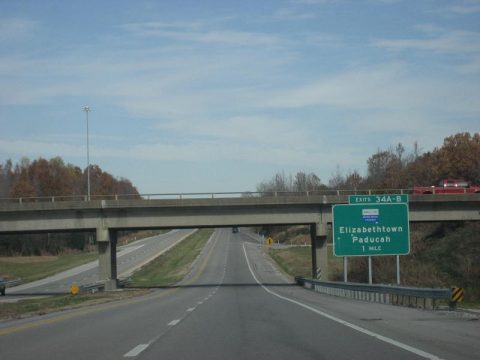
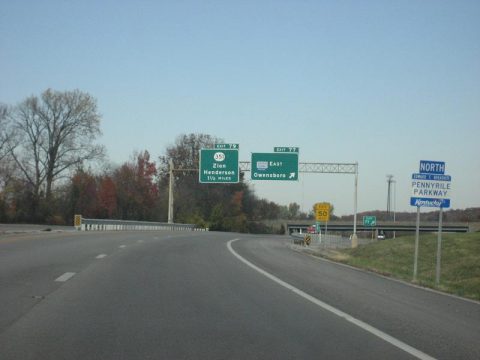
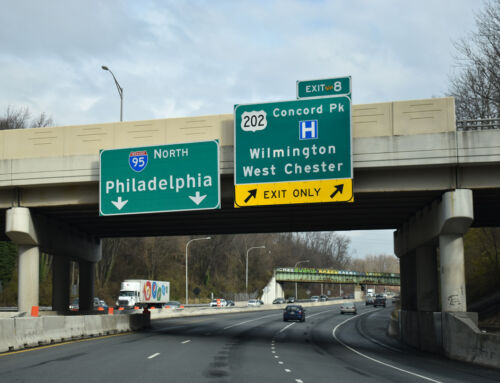
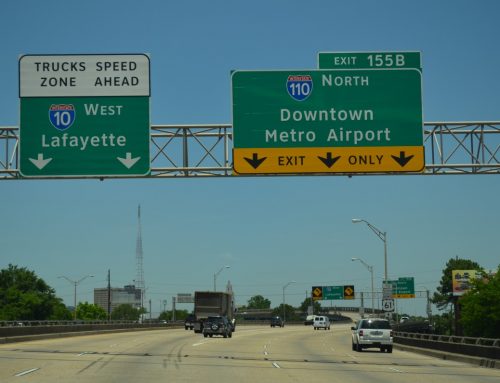
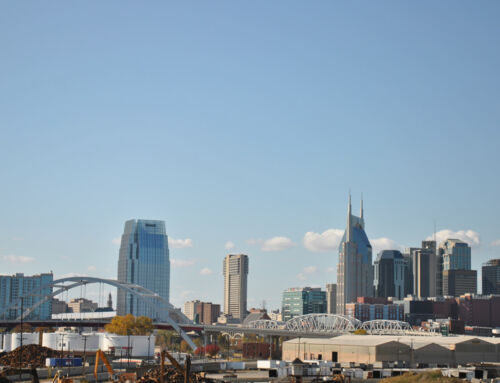
There is a long distance guide sign on I-65 south that lists *3* parkways. All 3 shields looked the same. I couldn’t read the sign even up close, and it made it difficult to focus on the road without worrying what the sign was saying — even squinting and I’m 24 years old. I’ll try and see if I have a pic of it.
Here in New York, we have many different styles of parkway shields, depending on what part of the state you’re in. Long Island has the lighthouse design, complete with a giant initial for what parkway it is (N for Northern, SM for Sunken Meadow, etc.). The parkways in Westchester County are a white on green version of the state shield design (which is actually a version of the official state shield in NY, fancy that). The first letter in each word is bolded, such as TSP for Taconic State Parkway. This is only in shields, the guide signs generally spell the name out, at least in Westchester.
I generally consider Kentucky and Virginia to be part of the Southeast, along with West Virginia. Ohio is part of the Midwest with Maryland and Delaware being part of the Northeast.
Midwest or Southeast? That’s the question to quote Shakespeare ;-) I guess I could said then Western and Northern Kentucky are part of the Midwest while Southern and Eastern Kentucky (or Southeastern KY) are part of the Southeast.
I’m glad to see some of these issues lessened with I-69 (as well as I-66), now the apparition of 3di of I-69 and I-66 will help the situation as well. But the best would be the rerouting of some state and US highways at some parkways (US 62 for the Western Kentucky pkwy and Blue Grass Pkwy for example) or putting the secret/unsigned numbers of the parkways signed!
Stars and Bars = Southeast
Kentucky as Southeast or Midwest? That’s a toughie. I would probably say Midwest, however.
http://www.millenniumhwy.net/new_signs_ky_2007/new_signs_ky_2007.html
Lots of photos of the new parkway signs. Elsewhere on my site I have photos of most of the old-style parkway signs.
Mr. Delery, I would love to see any photos you have from Kentucky.
As for KY”s geography — most here think we’re in the Southeast. The University of Kentucky’s athletic teams play in the Southeastern Conference.
I don’t know why you are vilfying these parkways. I have utilized them for years and the shields are more than legible. Great work on related topics however.
I wrote this before I even saw the Parkway shields in person, and after several experiences with these signs, I stand by my thoughts on their illegibility.
Just something near and dear to my heart. As a multigenerational Kentuckian, I can assuredly say that most of her inhabitants consider themselves southerners, we would actually be offended if someone thought otherwise. These are some Southern features in which Kentucky is known for. Some climates in far Eastern Kentucky are considered temperate, however for the most parts of the state a humid subtropical climate is present, the northern tier however is in a transitional zone. Quintessential southern fare such as, sweet tea, greens and beans, cornbread, coca-cola, and of course fried chicken, are served all over the state North, South, East or West. The lyrically beautiful dialect of the natives. The Kentucky Derby, (how much more southern can we get there?). Although the Union did not accept Kentucky as a secessionist state, there were a number of residents who created a confederate government in Western and South Central Kentucky. The Confederate government acknowledged Kentucky as a sister state and admitted her to the Confederacy on December 10, 1861. Most people do not know that the 13’th star on the confederate flag represents Kentucky.
I’m a native Louisvillian, and the only time of the year I get the Southern vibe is around Kentucky Derby season. In this part of the state, there’s a distinctly Midwestern air. Probably because we’re a good-sized metro area (1.6 mil) with a much more diverse population than all but the college towns/cities in the state. Our four-season climate and relative lack of accented speech compared to our southern and eastern neighbors, Louisville and Northern Kentucky’s strong pro-Union sentiments and industrial heritage (at one time, Louisville was the leading industrial city south of Chicago and still has a lot) probably weighs in to it, too.